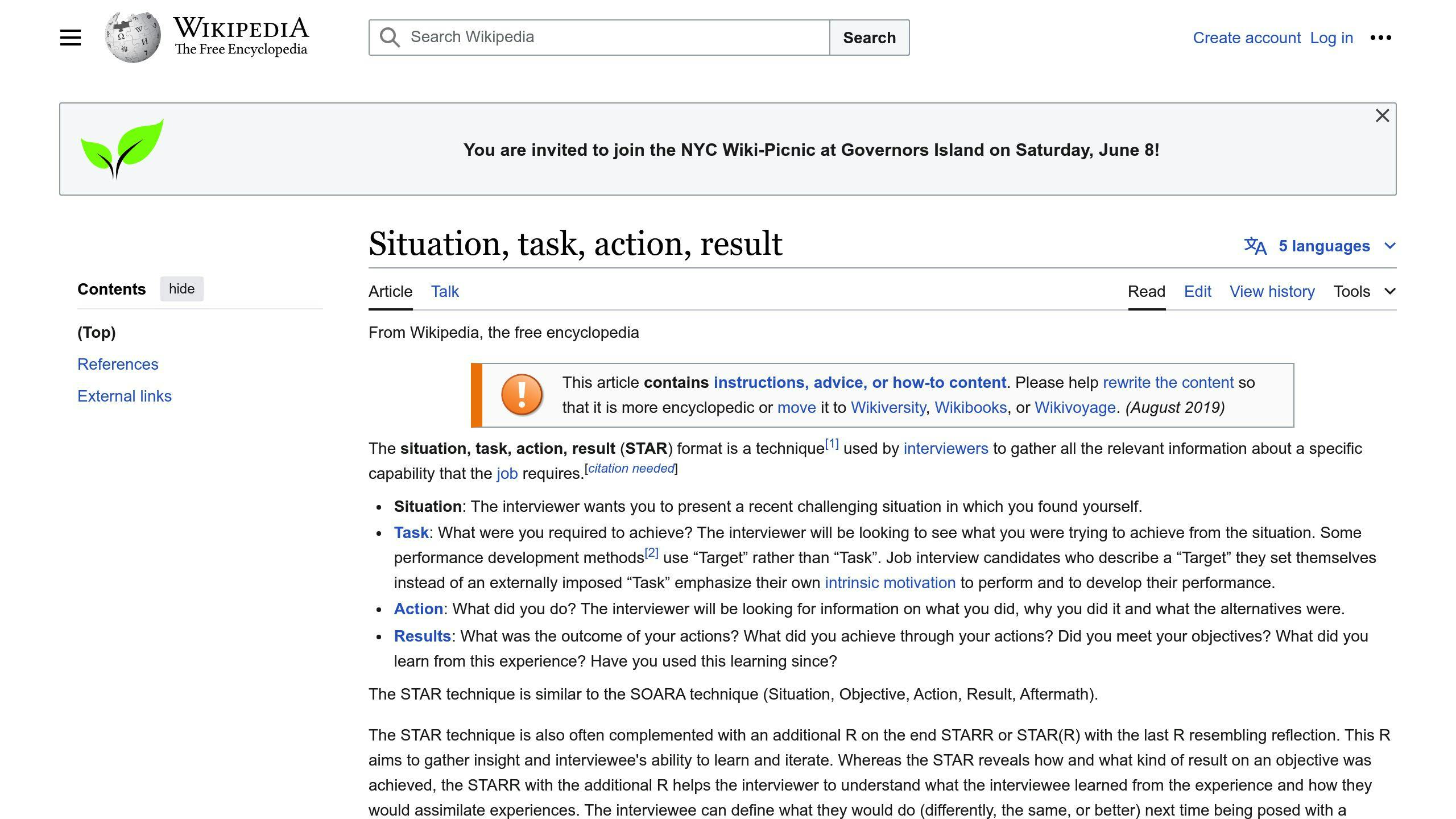A skills-based cover letter highlights your relevant abilities that match job requirements. Here's a quick guide to writing one:
- Analyze the job description
- Choose the best format
- Write a strong opening
- Focus on key skills
- Give specific examples
- Address missing skills
- End with clear next steps
| Tip | Key Action |
|---|---|
| 1 | Extract core skills from job post |
| 2 | Use header, opening, skills section, examples, closing |
| 3 | Show company research and enthusiasm |
| 4 | List 3-5 top skills with brief examples |
| 5 | Use STAR method for achievements |
| 6 | Highlight related skills and learning efforts |
| 7 | Recap skills, show interest, request interview |
This approach helps you stand out by directly addressing employer needs, especially useful for career changers or those with gaps in employment.
Related video from YouTube
1. Read the Job Description Carefully
Reading job descriptions thoroughly is key to writing a strong skills-based cover letter. Here's how to break down a job posting effectively:
1. Analyze the Job Title and Overview
- Check if the role matches your career goals
- Understand the main purpose of the position
2. Identify Core Requirements
- Focus on "required" or "minimum" qualifications
- Note both technical skills and soft skills needed
3. Create a Skills List
- Extract key skills from the job description
- Match them with your own abilities
4. Research Company Culture
- Look for clues about the company's values
- Find ways to reflect these in your letter
Example: Breaking Down a Job Description
| Job Description Element | What to Look For | How to Use It |
|---|---|---|
| Job Title | Level of responsibility | Tailor your application to the seniority |
| Required Skills | Technical and soft skills | Highlight matching skills in your letter |
| Qualifications | Education and experience | Show how you meet or exceed these |
| Company Values | Keywords like "teamwork" or "innovation" | Incorporate these themes in your letter |
2. Pick the Best Format
When writing a skills-based cover letter, choosing the right format is key. Here's a breakdown of an effective structure:
- Header: Your contact info, date, employer's details
- Opening: Mention the job and your interest
- Skills Section: List relevant skills, grouped by type
- Examples: Show how you've used these skills
- Closing: Restate interest and request an interview
Effective Skills-Based Cover Letter Format
| Section | Content | Purpose |
|---|---|---|
| Header | Name, email, phone, date, employer info | Sets professional tone |
| Opening | Job title, how you found it, enthusiasm | Grabs attention |
| Skills | Relevant abilities, grouped (e.g. technical, soft) | Highlights key qualifications |
| Examples | Brief stories of skills in action | Proves your abilities |
| Closing | Interest recap, interview request, thank you | Encourages next steps |
This format puts your skills front and center, making it easy for employers to see your fit. Remember to tailor each section to the specific job.
Tips for Using This Format:
- Keep it to one page
- Use bullet points in the skills section for easy scanning
- Stick to 2-3 examples that best show your skills in action
- Use action verbs to describe your accomplishments
3. Write a Strong Opening
The first few lines of your cover letter can make or break your application. Here's how to start strong:
Avoid Common Phrases
Skip overused openings like "I am writing this letter because I am interested in your position." Instead, show real interest in the company.
Highlight Your Skills
Start by mentioning your most relevant skills for the job. This grabs attention and shows your value right away.
Show You've Done Your Homework
Mention something specific about the company to show you've researched them.
Use Personal Connections
If someone referred you, mention their name early on.
Examples of Strong Openings
| Type | Example | Why It Works |
|---|---|---|
| Skills-focused | "As a marketing manager with 5 years of experience leading teams and increasing brand visibility, I'm excited to apply for..." | Quickly shows relevant experience |
| Company research | "After reading about your recent award in Mogul Millennial for employee engagement tools, I felt compelled to apply for..." | Demonstrates knowledge of company achievements |
| Personal connection | "Jayne Peck mentioned you had an opening on your graphics team, and I couldn't be more excited to apply." | Uses a mutual contact to create a connection |
| Passion-driven | "When I saw that WILCO Services was praised in Business Magazine for being one of the most inclusive companies, I knew I had to apply for..." | Shows alignment with company values |
Tips for a Strong Opening
- Keep it short and clear
- Show enthusiasm for the role
- Tailor it to the specific job and company
- Use active language
- Avoid clichés and generic statements
sbb-itb-b0d1ece
4. Focus on Your Key Skills
When writing a skills-based cover letter, highlighting your most relevant abilities is crucial. Here's how to effectively showcase your key skills:
Choose Your Top Skills
Pick 3-5 skills that match the job requirements. These can include:
- Technical skills (e.g., programming languages)
- Soft skills (e.g., communication)
- Industry-specific skills (e.g., financial analysis)
Use Clear Bullet Points
Present your skills using bullet points for easy reading. Each point should include:
- The skill name
- A brief example of how you've used it
- Measurable results, if possible
Example Skills Section
| Skill | Example |
|---|---|
| Data Analysis | Used SQL to analyze customer data, leading to a 15% increase in sales |
| Project Management | Led a team of 8 to complete a software upgrade 2 weeks ahead of schedule |
| Client Communication | Improved client satisfaction scores by 20% through clear, regular updates |
Add Numbers Where Possible
Use specific figures to show the impact of your skills:
- "Increased website traffic by 50% in 3 months"
- "Managed a $500,000 budget, finishing 10% under target"
Match Skills to the Company
Research the company and tailor your skills section:
- For a startup, highlight adaptability and problem-solving
- For a large corporation, focus on teamwork and process improvement
Tips for Skill Selection
- Read the job description carefully
- Look at the company's website and social media
- Check LinkedIn profiles of current employees in similar roles
5. Give Specific Examples
When writing a skills-based cover letter, using real examples from your work history can make your application stand out. Here's how to do it well:
Use the STAR Method

The STAR method helps you explain your achievements clearly:
- Situation: Describe the context
- Task: Explain what you needed to do
- Action: Show the steps you took
- Result: Share the outcome with numbers if possible
Example Using STAR:
| STAR Element | Description |
|---|---|
| Situation | Company faced declining sales |
| Task | Increase revenue by 15% in 6 months |
| Action | Launched targeted email campaign |
| Result | Sales grew by 18%, adding $200,000 in revenue |
Add Numbers to Your Achievements
Use specific figures to show your impact:
- "Increased website traffic by 50% in 3 months"
- "Managed a $500,000 budget, finishing 10% under target"
Match Your Examples to the Job
Pick examples that fit what the company is looking for:
| Job Requirement | Matching Example |
|---|---|
| Leadership skills | "Led a team of 8 to finish a project 2 weeks early" |
| Customer service | "Improved customer satisfaction scores by 20%" |
Tips for Choosing Good Examples
- Read the job post carefully
- Look at the company's website
- Check LinkedIn profiles of people in similar roles
"I want to see the 3-4 juicy accomplishments from a candidate's career (that match my advertised need). These highlights must excite me to such a level that this candidate becomes a can't-miss prospect." - Ron Kubitz, Recruiting Manager, Brayman Construction Corp.
Make Your Examples Easy to Read
Use bullet points or a simple table to show your achievements:
| Skill | Example |
|---|---|
| Project Management | Completed $2 million software project 3 weeks early, improving efficiency by 15% |
| Sales | Increased client base by 25%, adding $150,000 in new revenue over 6 months |
6. Discuss Any Missing Skills
When writing a skills-based cover letter, it's important to address any skills you lack that are mentioned in the job listing. Here's how to handle this effectively:
Highlight Related Skills
If you're missing a specific skill, focus on related abilities you do have. For example:
| Missing Skill | Related Skill to Highlight |
|---|---|
| Python programming | Experience with Java and C++ |
| Social media marketing | Content creation and digital marketing |
| Project management certification | Team leadership and deadline management |
Show You're Learning
Mention any steps you're taking to gain the missing skills:
- "I'm currently enrolled in an online Python course on Coursera"
- "I've been practicing social media strategies through volunteer work"
- "I'm studying for the PMP certification exam next month"
Be Honest and Positive
Don't try to hide skill gaps. Instead, frame them as growth opportunities:
- "While I haven't used Salesforce, I'm a quick learner with CRM systems"
- "I'm excited to expand my skills in data analysis on the job"
Example: Addressing Missing Skills
Here's how you might address a missing skill in your cover letter:
"While I don't have direct experience with Tableau, I've used similar data visualization tools like Microsoft Power BI extensively in my current role. I've created over 50 dashboards that increased data-driven decision making by 30% in my department. I'm confident my analytical skills and quick learning ability will allow me to become proficient in Tableau within a short time frame."
7. End with Clear Next Steps
The last part of your cover letter is key. It should:
- Sum up your skills
- Show you're excited about the job
- Ask for an interview
Here's how to do it well:
Recap Your Skills
Start by reminding the reader why you're a good fit. For example:
"My 5 years in digital marketing, where I grew social media followers by 40%, can help boost your brand."
Show You're Keen
Let them know you really want the job:
"I'm excited to use my skills to help [Company Name] reach more customers."
Ask for an Interview
End by asking to meet:
"I'd love to talk more about how I can help your team. Can we set up a time to chat?"
Keep It Short
Your last paragraph should be about 60 words. Don't add new info here.
| Do | Don't |
|---|---|
| Thank them for their time | Apologize for lack of skills |
| Focus on what you can do for them | Talk about what they can do for you |
| Ask to meet | Assume you'll get an interview |
Example of a Good Ending
Here's a solid way to wrap up:
"I'm eager to bring my sales skills to [Company Name] and help grow your client base. Thank you for considering me. I'm available to discuss how I can contribute to your team's success. When would be a good time to talk?"
Conclusion
Writing a skills-based cover letter can boost your job application by showing employers what you can do. Here's a quick recap of the seven tips we covered:
1. Read the Job Post Carefully
Look for:
- Key skills the job needs
- Company values and culture
2. Choose a Good Format
Use this structure:
- Header with your info
- Opening that grabs attention
- Skills section with bullet points
- Examples of your work
- Closing that asks for an interview
3. Start Strong
In your opening:
- Skip overused phrases
- Show you know about the company
- Mention your top skills
4. Focus on Key Skills
| Do This | Don't Do This |
|---|---|
| Pick 3-5 skills that match the job | List every skill you have |
| Use bullet points | Write long paragraphs |
| Give brief examples | Be vague |
5. Give Real Examples
Use the STAR method:
- Situation
- Task
- Action
- Result
6. Talk About Skills You're Missing
If you lack a skill:
- Show related skills you have
- Tell how you're learning it
7. End with Next Steps
In your closing:
- Sum up your skills
- Show you want the job
- Ask for an interview


